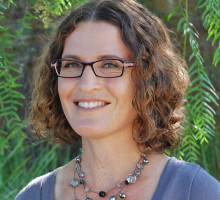
Reviews
This work provides an interesting historical examination of Galileo’s original text. Recommended
Raphael’s book is an uncommon and very welcome contribution to the ever-growing Galileo scholarship.
Eye-opening...Raphael's brilliant epilogue has far-reaching implications for narratives of change. Her critique of the prevailing historiography of the Scientific Revolution highlights deep flaws in its warfare model of change, in which traditionalists fight innovators and noncombatants are irrelevant. Leading by example, she suggests that researchers learn to appreciate that most readers neither embrace nor reject novelty in toto. The pick-and-choose eclecticism that Raphael has found among readers of Two New Sciences makes for less triumphalist melodrama, but much more convincing history.
Renée Raphael's Reading Galileo: Scribal Technologies and the "Two New Sciences" gives a telling account of the reception of a seminal work of the Scientific Revolution, which has wider implications for the history of reading and of the nature of intellectual traditions at the time more generally.
An innovative, valuable, and brilliantly researched study of the initial reception and multiple uses of one of the most important books in the history of science. Using a sophisticated and well-chosen methodology, Raphael convincingly establishes the relationship between individual actors' reading techniques and their intellectual ecosystems
An important, innovative work, extensively and meticulously researched.
Through remarkable research in manuscript materials that have never been studied before, Renée Raphael takes us into the mental processes of early modern readers, some famous, some not, as they grappled with Galileo’s Two New Sciences. In this wonderfully innovative blend of history of science and book history, we learn about Galileo’s sciences of matter and motion, but also about methods of reading, note-taking, and teaching through which contemporaries absorbed this work into their thinking, often in more traditional ways than we might expect.
Book Details
Acknowledgments
Introduction
Chapter 1 An anonymous annotator, Baliani, and the "ideal" reader
Chapter 2 Editing, Commenting, and Learning Math from Galileo
Chapter 3 Modifying authoritative reading to
Acknowledgments
Introduction
Chapter 1 An anonymous annotator, Baliani, and the "ideal" reader
Chapter 2 Editing, Commenting, and Learning Math from Galileo
Chapter 3 Modifying authoritative reading to new purposes
Chapter 4 An annotated book of many uses
Chapter 5 The University of Pisa and a Dialogue between Old and New
Chapter 6 Jesuit bookish practices applied to the Two New Sciences
Epilogue
Notes
Bibliography
Index






